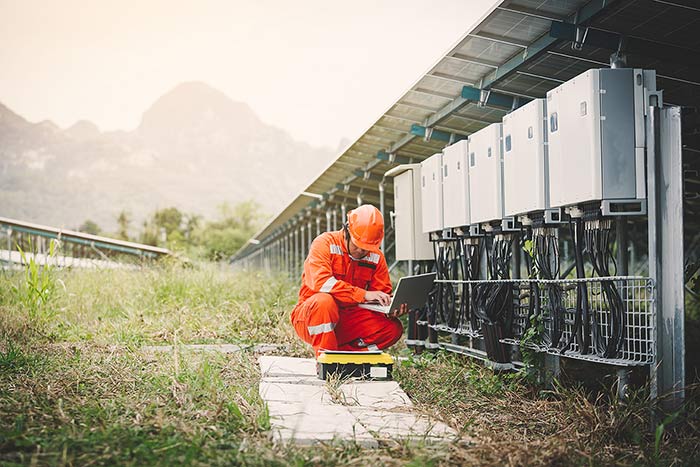Whether or not you are going to be installing an off-grid inverter personally, you should have a basic idea of how it operates in a complete solar electric system before you start the project. Trace inverters come in two basic flavors – with and without internal battery chargers. As you will see in the following paragraphs, the flavor influences the method of installation. Regardless, any good installation accomplishes certain basic requirements:
- Only suitable loads are wired to the inverter. This provides maximum utility for the inverter dollar.
- All unsuitable loads are not available to the inverter. Unsuitable loads include external battery chargers, air conditioners, electric heaters, water heaters, and full size electric ranges.
- Most important, the generator output and/or public power is never connected to the output of the inverter. Trace makes the only inverters protected against this condition. However, even with a Trace it is a condition you want to avoid. It is more stressful to the inverter than a direct short.
Installation an Off-Grid Inverter with Internal Battery Charger
Most of our inverters are sold in the “standby” configuration that includes an internal battery charger and automatic transfer switching from inverter to public power. The type of installation that works best for standby units is as follows:
STEP 1 – Determine the loads that you want to run from the inverter. These are typically AC outlets, microwaves, washing machines, lights, refrigerators, ice makers, TV/VCR, stereos, blenders, etc.
STEP 2 – Add an auxiliary breaker panel (sub-panel) to the main panel. It need only to have enough circuits to isolate the loads identified in step 1.
STEP 3 – Move the desired circuits from the main panel to the auxiliary breaker panel.
STEP 4 – Use an appropriate sized circuit breaker in the main AC panel to deliver AC to the inverter’s AC INPUT.
STEP 5 – Wire the inverter’s AC OUTPUT to the auxiliary breaker panel output.
EXAMPLE: The UL series inverter’s internal wiring and transfer relay are rated for 30 amps. If your application needs no more than 30 amps and all the loads you intend to operate are suitable for use with the inverter, then you can install the inverter without a sub-panel. Your source of AC power can be fed directly to the inverter’s AC input. However, the AC source should still be fused at 30 amps.
This completes the AC portion of the installation. Now, whenever there is AC power from either the generator or public power, the inverter will sense it and change to its battery charger mode. In this mode, it passes power from the main panel directly through the auxiliary panel. Everything works exactly as it did before, except that the inverter is now charging the batteries. When there is no AC power at the main panel, the inverter reverts to the inverter mode delivering power to the auxiliary panel. With this installation, you will automatically have AC power at the auxiliary panel without human intervention.
Installing an Off-Grid Inverter Without Internal Battery Charger
There are two basic variations for installing the standard inverter. If you want to be able to run loads from the inverter and another AC source, the recommended installation will be different than if all loads are dedicated to the inverter.
A. Installation for dedicated loads only:
STEP 1 – Connect all loads to the circuit breakers in an AC panel.
STEP 2 – Connect the inverter’s AC output (bottom two terminal positions) to the AC panel input.
B. Installation allowing other AC sources:
The guiding rule here is that there can be only one source AC present at a time. Therefore, a switching arrangement must be provided to ensure that either the inverter or another AC power source is connected to the panel – not both. This can be accomplished by using a relay for automatic operation or a switch for manual transfer. In either case, you want to use a double pole, single throw mechanism (DPST). For the UL series inverter’s it should be rated at 30 amps. If using a relay, it should have a 117 VAC field coil.
STEP 1 – Wire the AC breaker panel to the center position of the relay or switch.
STEP 2 – Wire the inverter output to the normally closed (NC) position of the relay switch. For a manual switch, either of the two remaining positions is satisfactory.
STEP 3 – Connect the alternate AC source (usually generator power or public power) to the normally open position of the relay (NO).
STEP 4 – If a relay is being used, the two poles of the field coil are connected between hot and ground of the alternate power source.



